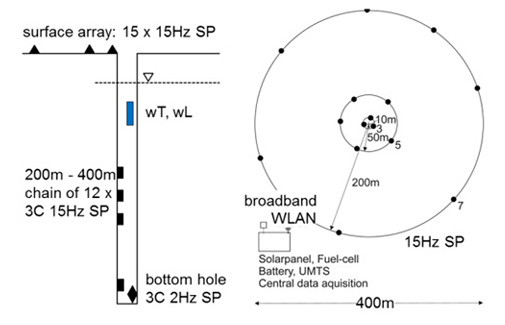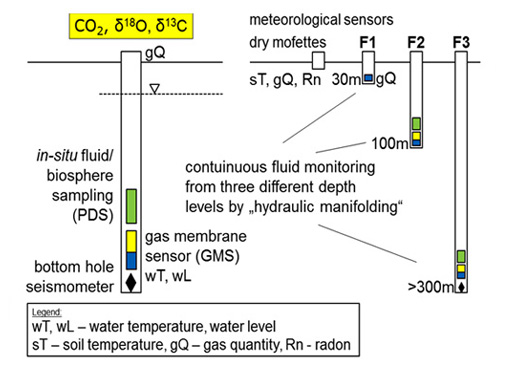Laboratory in Situ - Five Shallow Boreholes
An interdisciplinary drilling program advancing the field of interactions among earthquakes, fluids, rocks, and biosphere. A modern, comprehensive laboratory at depth will study three interconnected areas of primary research: earthquake swarms, fluid flow through the crust and mantle-derived CO2 and He degassing, and the composition and processes of the deep biosphere. Specifically, such a laboratory will comprise a set of five shallow boreholes some of them with 3D seismic array. The laboratory will be established under the International Continental Drilling Program (ICDP) to have unique multi-parameter observation of earthquake swarms and related phenomena.
Monitoring Sites
The monitoring depth of shallow boreholes will be a few hundred meters, which will improve the earthquake and fluid recordings. It will offer the possibility to study extremely small-magnitude earthquakes and analyse the fluid-induced source processes. So far, irregular fluid probing and analysis has been performed at the surface only, often in irregular regime. The located and well-studied sites of massive CO2 degassing offer the possibility for building a new generation of continuous real-time fluid monitoring in safe and logistically accessible areas.
Fluid monitoring at different depths will separate the effects of surface and deep processes related to com-position and rate of fluids. Regular and persistent occurrence of the earth-quakes in this region helps in designing monitoring net-work for optimized analysis

Drilling sites. S1-S4 mainly seismological monitoring; F1-F3 fluid and biosphere monitoring. Existing seismic stations at surface are marked by grey-filled triangles.
Seismological Monitoring

Concept of seismological 3D-arrays.
Fluid and Biosphere Monitoring

Concept of fluid and biosphere depth gradient monitoring.
Web administrator R. Beranek (2020)